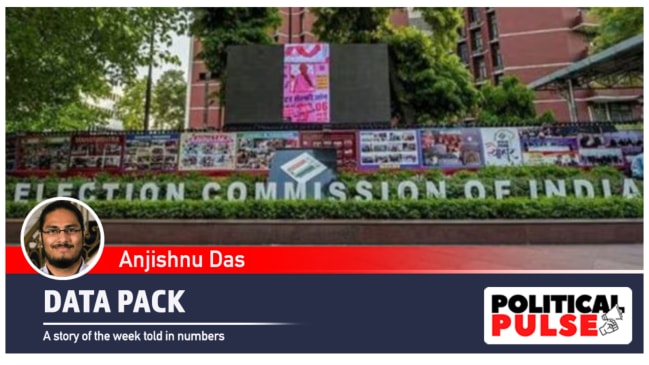The Trust Deficit Count: Inside the Election Commission’s Move to End a Decade of Suspicion Over Postal Ballots

Image via The Indian Express
NEW DELHI – On the morning of an Indian election count, the entire nation transforms into a single, massive audience. In tense counting halls, in bustling party offices, and in millions of living rooms, all eyes are fixed on the screens, waiting for the first numbers to trickle in. For decades, that first trickle—the opening scene in the high-stakes drama of democracy—has come from the postal ballots. And for just as long, it has been a scene that India’s Opposition parties have claimed is deeply flawed, a source of suspicion that taints the entire process that follows.
This week, in a landmark decision aimed at rebuilding trust in the electoral process, the Election Commission of India (ECI) has rewritten the script. By overhauling the decades-old formula for counting postal ballots, the ECI has addressed a core grievance of the Opposition and acknowledged the immense, often decisive, power of a silent and unseen electorate. This is not just a technical adjustment; it is a profound political statement aimed at tackling the trust deficit head-on.
The Silent Tsunami of Postal Votes
To understand the political firestorm surrounding postal ballots, one must first appreciate their sheer scale. What was once a minor provision for armed forces personnel has morphed into a silent tsunami of votes. The eligibility has expanded dramatically to include central forces on internal security duty, all officials involved in conducting the election, and, most significantly, a vast and growing cohort of senior citizens (those over 85) and persons with disabilities.
This has swelled the ranks of postal voters to nearly one crore (ten million) in the most recent general election. This is a staggering number. This hidden river of votes, cast away from the public gaze of the polling booth, is now large enough to unilaterally decide the fate of dozens of closely fought constituencies. A lead gained or lost in the postal count can mean the difference between victory and defeat, making the process of counting them as critical as the EVM votes themselves.
The Anatomy of Suspicion: Why the Old System Failed
The old rule was simple: count all postal ballots first, and only then begin counting the EVM votes. This sequential process, however, became a breeding ground for suspicion and political paranoia. The Opposition’s objections were rooted in several key issues:
- The Narrative War: The postal ballot results, announced first, would set the initial media narrative. News channels would flash “early trends” based exclusively on this segment, which could be misleading but would still create a powerful psychological impact, energizing one party’s base while demoralizing another’s before a single EVM vote was officially counted.
- The Rejection Controversy: Postal ballots have a notoriously high rejection rate due to minor clerical errors on the declaration forms. The Opposition has frequently alleged that this manual verification process, conducted in a single, high-pressure block at the start, is opaque. They have harbored fears that their supporters’ votes are unfairly rejected, a claim that is hard to verify but which has poisoned the atmosphere in counting halls.
- The “Close Contest” Fear: The most potent fear was reserved for nail-biting finishes. Imagine a scenario where Party A, after the postal count, has a clear lead of 6,000 votes. Party B now knows the exact, concrete target they need to chase in the EVM rounds. The Opposition has long argued that this clear, early target creates a window—real or perceived—for malpractice or pressure on officials during the final, tense rounds of EVM counting.
The New Formula: A Recipe for Transparency
The ECI’s new formula is a direct antidote to these fears. The rule of “concurrent counting” will completely change the rhythm of counting day.
Under the new system, the process will be integrated. At each table, after the votes from a round of EVMs are counted, a corresponding, pre-determined batch of postal ballots for that same area will be counted. The two tallies will then be added to the cumulative total for that round. The result will no longer be revealed in two separate chunks (postal first, then EVM), but will be built up, round by round, as a composite of both. The final result will emerge from a blend of votes, not a sequence.
A Victory for the Opposition
For the Opposition parties, this change is a monumental victory. It is a validation of a grievance they have raised for over a decade. The new system directly enhances transparency. By eliminating the isolated, early trend from postal ballots, it ensures that the narrative of the count builds organically.
Crucially, it slams shut the perceived window of opportunity for malpractice in close contests. Since no one knows the final postal ballot margin until the very end, there is no clear target to chase in the EVM rounds. This single change evaporates the core suspicion that has plagued the process. While the ruling BJP has officially maintained that it is confident in any fair process, the Opposition sees this as the ECI taking a tangible step to level the playing field.
In a democracy, the process of counting votes must not only be fair but must also be seen to be fair by all stakeholders. The ECI’s decision is a powerful acknowledgment of this principle. It may not end all political squabbling, but by addressing the “trust deficit count,” it ensures that the final verdict of the people is delivered with greater credibility and is accepted with greater grace.